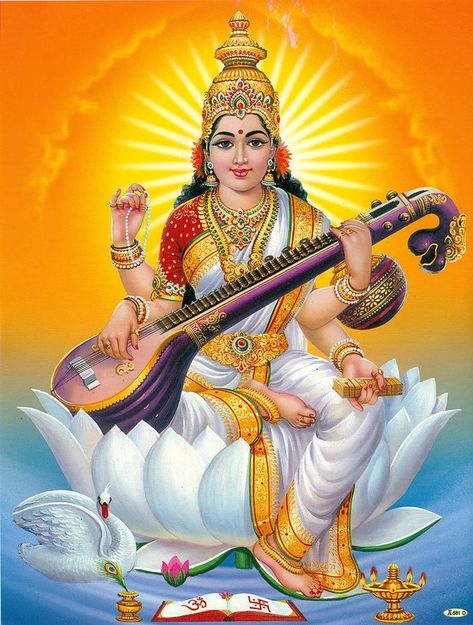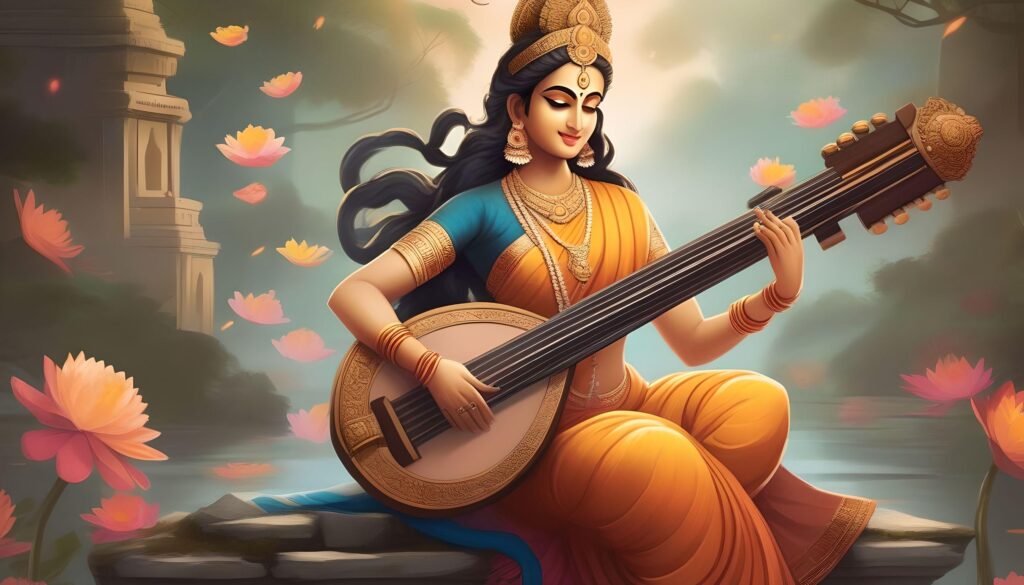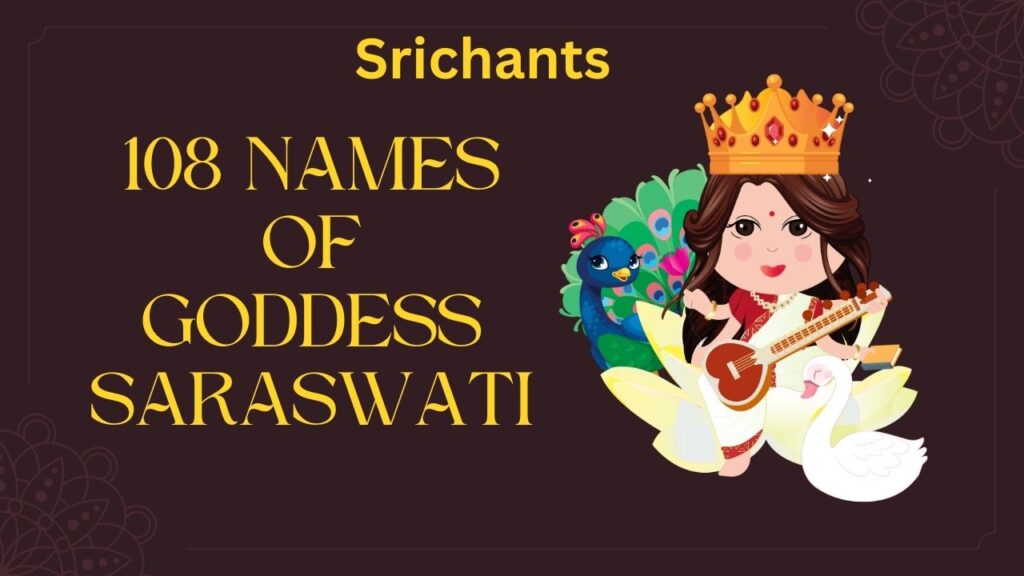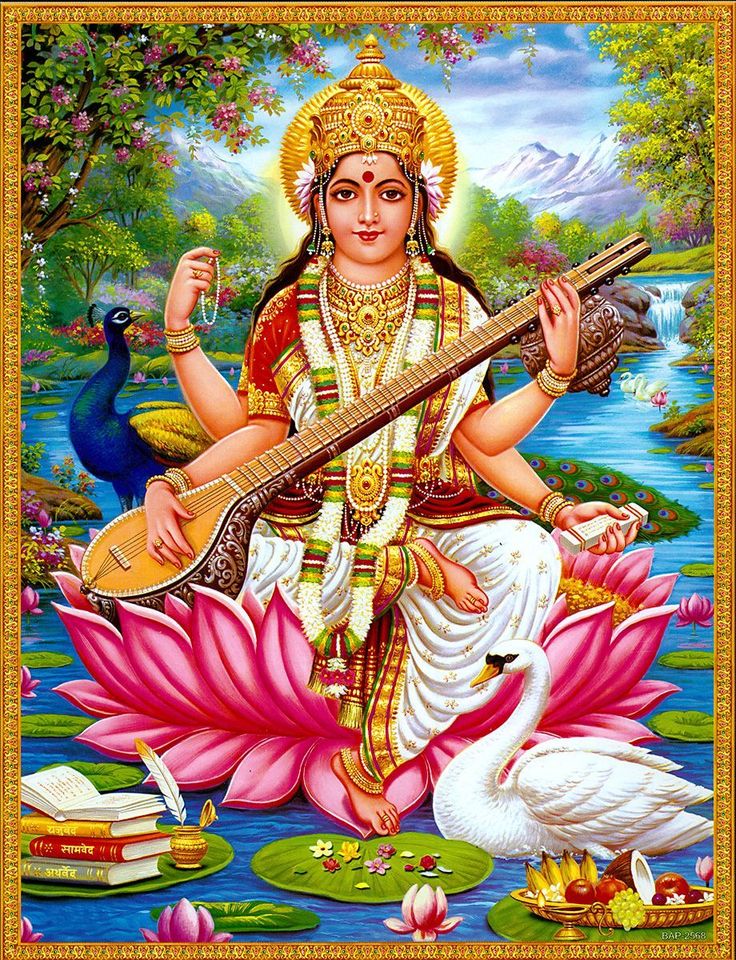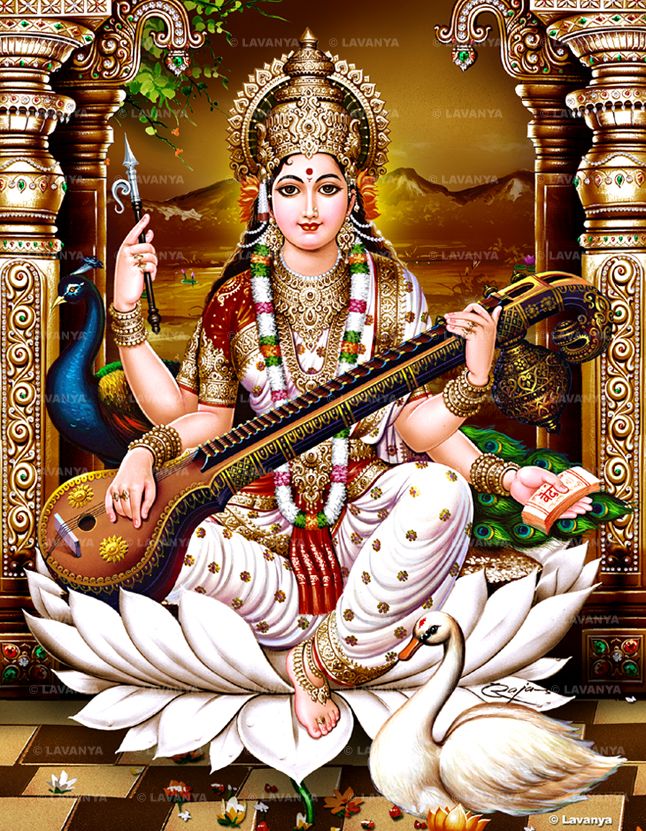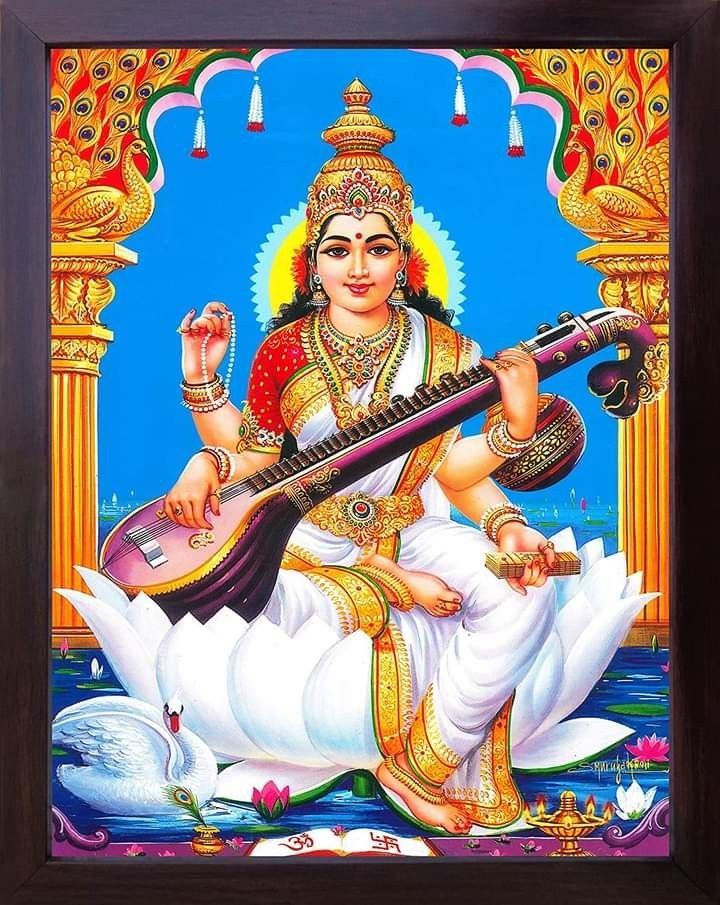Saraswati Deity : Vedas and Saraswati connection in Hinudism
Introduction
Within the oldest and most holy books of Hinduism, the Vedas, Saraswati, the beloved goddess, is found in great and ubiquitous presence. Saraswati’s impact goes beyond the confines of a simple deity since she embodies knowledge, wisdom, and the arts, therefore symbolizing the essence of enlightenment and the divine source of inspiration running across the Vedas. Her importance is deftly woven into the fabric of Vedic literature, guiding searchers throughout millennia toward spiritual insight. Examining Goddess Saraswati’s great influence on the Vedic tradition and her ongoing legacy in Hinduism, this page explores her rich imagery, varied forms, and multifarious responsibilities.
Goddess Saraswati’s iconography: symbolism and meaning
Goddess Saraswati is shown with great iconography and symbolic relevance. Often presented as a beautiful woman seated on a white lotus, clad in immaculate white, she stands for truth, purity, and light. The clothing and accessories of Saraswati highlight this idea of purity and actual wisdom. Usually showing four limbs, she symbolizes the four facets of the mind and self-consciousness: manas, buddhi, citta, and ahamkāra.
Saraswati has the Vedas in her hands—a mālā (rosary) for meditation, a water pot signifying purity and discrimination, and a veena, a musical instrument denoting the creative arts and sciences. The goddess is also connected with the hamsa, a swan or goose, which stands for the capacity of discrimination between good and evil. Furthermore symbolic of Saraswati’s vibrant beauty, dance, and transforming capacity to turn darkness into illumination is the peacock, sometimes known as citromekhala.
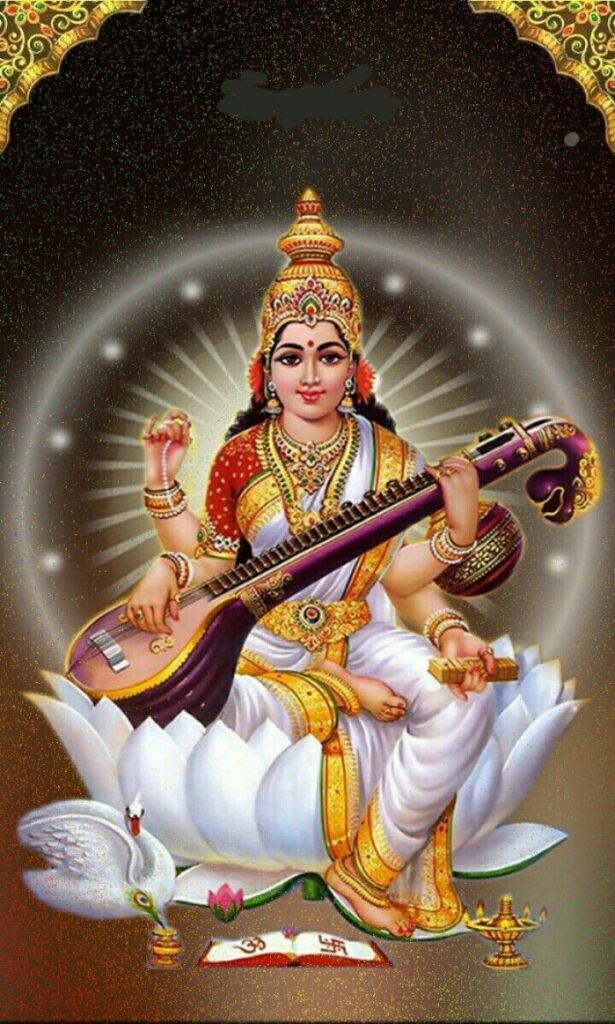
Saraswati was originally personified as the Sarasvati river, so reflecting fertility, purity, and abundance. Her relationship to water and rivers is therefore also important. Saraswati’s journey into a river is evidence of her multifarious character and the holy value of her waters. Saraswati’s core as the goddess of wisdom, creativity, discrimination, and purity is wonderfully caught and honored through this rich iconography.
Various forms and avatars of Goddess Saraswati
Hinduism honors Goddess Saraswati in several forms and avatars in many areas and traditions. Reflecting her functions in knowledge, arts, speech, and the more general divine feminine spirit, these several forms highlight the multifarious character of the goddess.
One famous portrayal is the “Dancing Sarasvati” discovered in the Hoysaleswara temple in Karnataka, where the goddess is shown with eight hands, exhibiting her in a conventional Indian dance pose. Symbolic of her as the goddess of knowledge and all creative endeavors, she carries a pen, a palm leaf manuscript, a musical instrument, and implements of major arts.
Mahasaraswati is another form, an eight-armed goddess seated on a white lotus clutching a Veena. Respected for her part in eradicating asurs, or devils, she is linked with a meditation stanza in the Devi Mahatmya.
Under the Shakta tradition, Saraswati appears as Brahmani, a Matrika avatar or mother goddess. In this form she not only stands for the knowledge goddess but also the wisdom of ultimate truth. Matangi is her Mahavidya form; she is connected with conquering foes, fighting disease, and correcting impurities.
In some areas Saraswati is also known as Gayatri, the personification of the Vedas, and Savitri, the consort of Brahma and a symbol of purity; she is also adored as Vidhya, the formless notion of wisdom and knowledge.
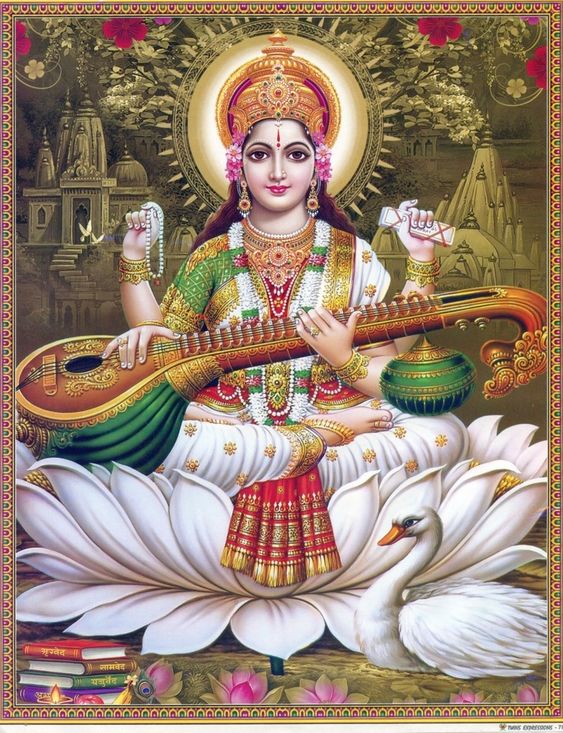
Moreover, in certain customs Nila Saraswati is seen as a kind of Mahavidya Tara, in which the goddess symbolizes a furious and destructive manifestation rather than the peaceful and sympathetic conventional Saraswati.
Particularly revered in Kashmir, the Sharada avatar—which stands for the triple incarnation of the goddess Shakti—Sharada (learning), Saraswati (knowledge), and Vagdevi—speech. One of the Maha Shakti Peethas, the sites thought to be enshrined for the fallen body parts of the goddess Sati, this form has great spiritual significance.
Reflecting her several functions in the domains of knowledge, arts, speech, and the divine feminine essence, these several incarnations and avatars of Goddess Saraswati highlight the depth and richness of her presence in Hinduism.
From River Goddess to Embodiment of Wisdom, Saraswati in Vedic Literature
Hinduism’s importance of Goddess Saraswati dates back to the Vedic age, when she first appears in the oldest of the Vedic writings, the Rigveda. Saraswati first seems in this ancient source as a deified river connected with abundance, power, and the Storm Gods. Representing the Waters and the Storm Gods, she makes a triad with the sacrificial goddesses Ila and Bharati.
Saraswati is connected with wealth, plenty, health, cleanliness, and healing as one of the Apas, or water deities. Particularly in the spheres of poetry and religion, her responsibility then extends to overseeing “dhī,” which stands for inspired thought, intuition, and intelligence.
Saraswati’s presence is especially reinforced in the epic literature of Hinduity. She seems in the Mahabharata as the goddess of knowledge and speech as well as a holy river for pilgrimages. Her peaceful riverbanks draw sages and priests performing asceticism and sacrifices; she also significantly helps to prevent a possible tragedy by guiding the boon given to a rakshasa, demon.
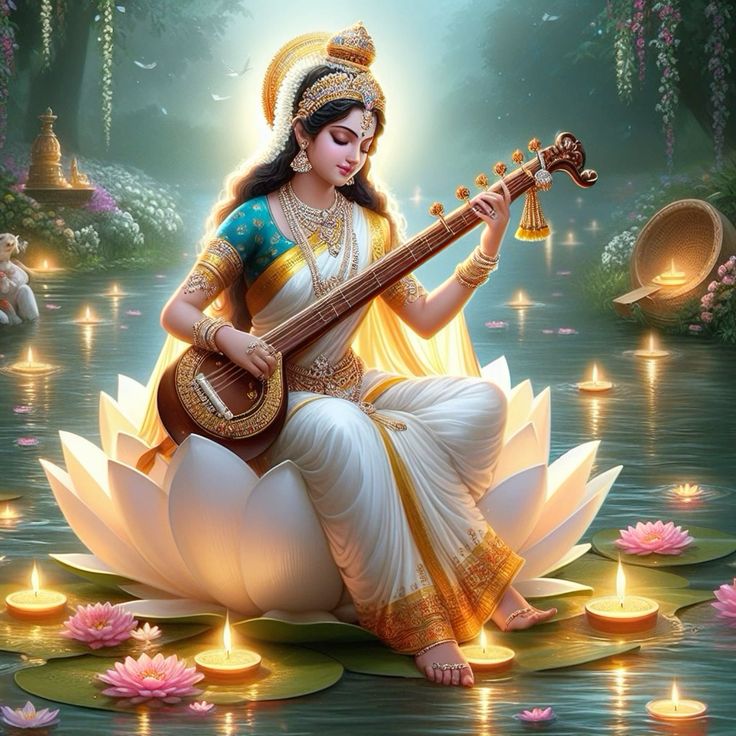
The Puranic books probe more into Saraswati’s beginnings and her relationship with the divine. She is said in these books to have been created by Brahma for such intent. Her marriage with Brahma and her function as the mother of the Vedas—symbolized by her iconic four-armed form clutching a book, mala, veena, and a water pitcher while riding on a swan—are shown in many Puranas.
The Matsya Purana tells the tale of Brahma’s great longing for Saraswati, which caused her to circle him and produce faces on the sides and rear of Brahma’s head, so signifying the cosmic relevance of their union. The Bhagavata Purana also has a fascinating story about Saraswati, first one of Vishnu’s brides, becoming envious of Ganga’s looks toward Vishnu, which sets off a sequence of curses altering the paths of the three goddesses.
Saraswati in Shakta traditions: the Mahavidyas and the Tridevi
Goddess Saraswati is quite important in the Devi Mahatmya, a book included in the Markandeya Purana, within the Shakta tradition. This book describes the idea of the “triple goddess,” or Tridevi, in which Saraswati, together with Mahakali and Mahalakshmi, symbolizes the saguna (“with form”) emanations of the highest goddess, Mahadevi. Saraswati is the active, creative principle of this heavenly trio.
While keeping traits of music and learning, Saraswati takes the form of Matangi, known as the “Tantric Saraswati,” in the Tantric Shakta traditions is also connected with defeating foes, eliminating disease, and addressing impurity. Among the eleven Mahavidyas, the strong goddesses in Shakta tradition, she is unique.
Matangi’s significance reaches into Shri Vidya Shaktism, where she is regarded as Shyamala, a realization of Lalita Tripurasundari’s wisdom power. In this sense, Matangi is observed in the Syamala Navaratri and considered as Lalita’s principal minister.
These Shakta customs draw attention to Saraswati’s several roles, whereby she transcends the limits of a loving goddess of wisdom and becomes a strong, transforming agent inside the divine feminine spirit.
Significance of Saraswati in Vedic Creation and Knowledge
The fact that Goddess Saraswati appears throughout the Vedas and Puranic writings emphasizes her indispensible part in the process of creation and knowledge spreading. Saraswati is intimately connected in the Vedic perspective with the act of creation since Brahma is usually shown as creating the Vedas to manifest them and so support the creative process.
Deeper into this link, the Puranas characterize Saraswati as the mother of the Vedas, represented by her traditional four-armed appearance clutching the holy books. This portrayal emphasizes her function as the divine source of the Vedic knowledge, which has been handed down over many centuries of scholars and seekers.
Saraswati’s relationship with “dhī,” which stands for inspired thought, intuition, and intelligence, emphasizes her importance as the goddess of knowledge, wisdom, and the arts as well. Her impact is especially clear in the fields of poetry, music, and other artistic endeavors, where she is praised as the personification of the creative spark igniting artistic expression.
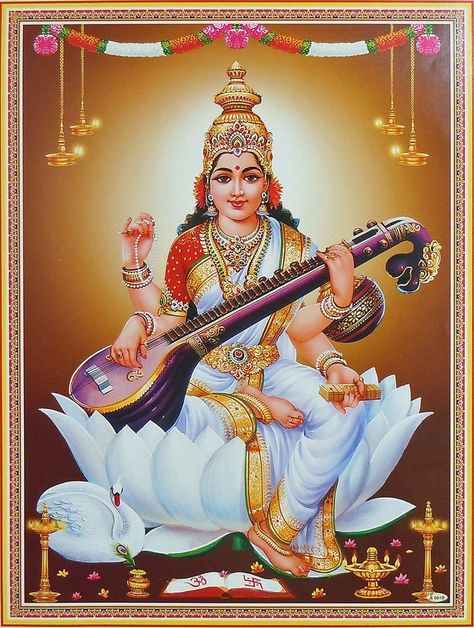
Representing Saraswati as a source of direction and safety for the characters in these epic tales, the Mahabharata and Ramayana confirm her position as the goddess of speech and knowledge. Her power and wisdom are shown by her ability to affect the boons given to rakshasas (demons) and by her part in averting possible tragedies.
Beyond her function as a divinity, Saraswati’s importance in the Vedic tradition reflects the fundamental core of the Vedas, the divine inspiration lighting the road of spiritual knowledge for searchers across millennia. Her appearance in the Vedic literature is evidence of the great knowledge and illumination these old texts capture.
Saraswati within Tantric and Shakta Traditions
Beyond the Vedic and Puranic domains, Goddess Saraswati is rather important in the Tantric and Shakta Hindu traditions. Saraswati is considered among the Tridevi, the holy feminine triad comprising Mahakali and Mahalakshmi, under the Shakta religion.
Saraswati is shown in the Devi Mahatmya, a foundational work in Shakta philosophy, as the active and creative force in this divine trio, therefore reflecting the energy of manifestation and transformation. Particularly important in the form of Matangi is her status as a Mahavidya, one of the ten potent goddesses in Shakta tradition.
Retaining the qualities of music and learning connected with the conventional Saraswati, Matangi, sometimes known as the “Tantric Saraswati,” is also related with overcoming obstacles, fighting disease, and confronting impurities. This multifarious character of Matangi reflects the Tantric Shakta’s conception of the divine feminine as a transforming agent capable of transcending the bounds of the benign and the wrathful.
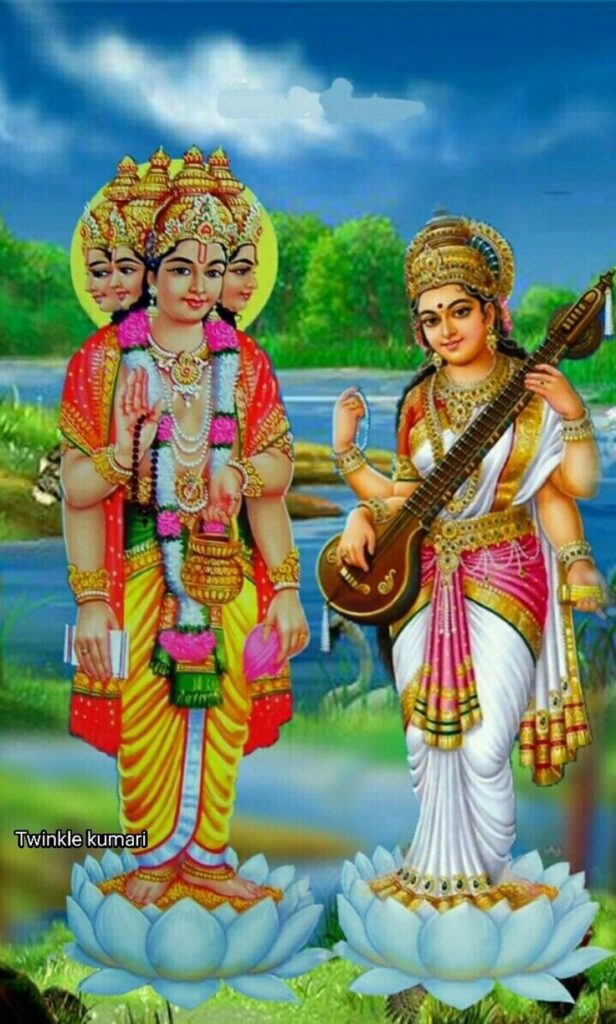
Moreover, Matangi’s significance reaches into the Shri Vidya Shaktism, in which she is recognized as Shyamala, a realization of Lalita Tripurasundari’s wisdom power. In this sense, Matangi is observed during the Syamala Navaratri and considered as Lalita’s prime minister, therefore highlighting her major part in the Shakta pantheon.
The respect of Saraswati in her several incarnations, including Matangi and Shyamala, by the Tantric and Shakta traditions emphasizes the goddess’s capacity to cover both the creative and destructive sides of the divine feminine power. Saraswati’s multifarious portrayal emphasizes the depth and complexity of her importance inside the larger Hindu spiritual terrain.
Hinduism’s Legacy of Saraswati: Timeless Wisdom and Continuating Influence
Hinduism’s ongoing legacy of Goddess Saraswati is evidence of her great and multifarious importance. From her beginnings as a deified river in the Rigveda to her many forms in the Puranic and Tantric traditions, Saraswati’s presence has been a continual source of inspiration and knowledge for millennia of devotees.
From her white lotus seat to her musical instruments and holy books, Saraswati’s rich iconography and symbolism have evolved into essential component of Hindu spirituality’s visual language. For worshippers from many cultural and geographical backgrounds, these visual depictions provide a physical embodiment of the goddess’s core, therefore enabling her accessibility and relatability.
Saraswati’s duties as the goddess of knowledge, wisdom, and the arts have solidified her respect among the Hindu pantheon. Her impact goes beyond the realm of religion since she is also honored and called upon in many scholarly and artistic initiatives, from the opening of colleges and universities to the start of creative projects.
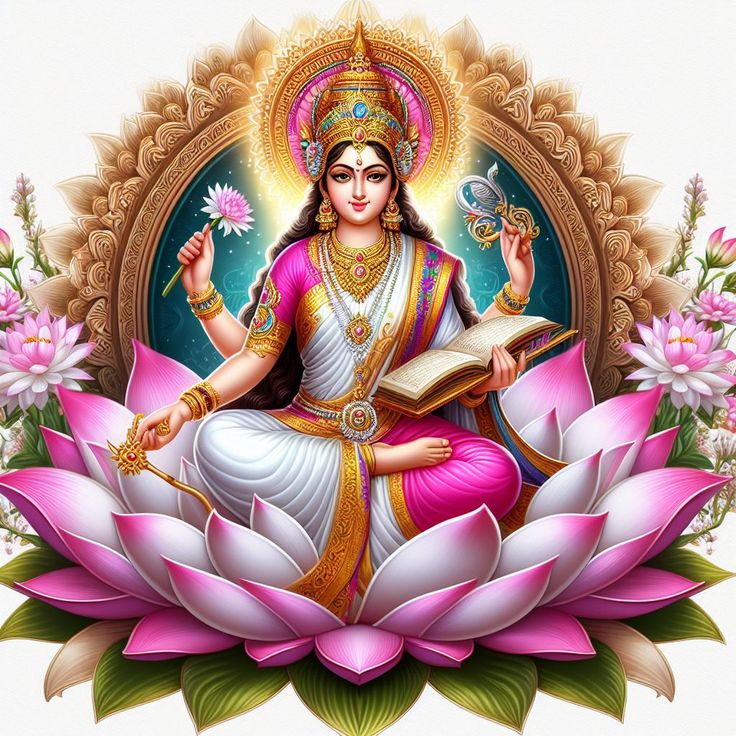
The several forms and avatars of Saraswati—Mahasaraswati, Brahmani, and Matangi—showcase the goddess’s adaptability to the changing spiritual requirements of her adherents. Each with its own special qualities and connotations, these expressions show the depth and richness of Saraswati’s influence in the Hindu faith.
Goddess Saraswati’s legacy ultimately rests in her capacity to live the core of the Vedas, the historic source of Hindu knowledge and wisdom. Her ubiquitous presence in the Vedic writings and her part in the creative and transforming activities of the divine have made her an eternal emblem of enlightenment and spiritual fulfillment. Saraswati’s presence is always continuous and beloved as seekers keep turning to the Vedas for direction and inspiration; she guides us into the highest spheres of knowledge and self-realization.
Conclusion
In the Hindu faith, Goddess Saraswati—the “Goddess That Pervades The Vedas—has great and ongoing importance. From her beginnings as a deified river in the Rigveda to her many appearances throughout the Puranic and Tantric traditions, Saraswati’s presence has been a continual source of inspiration and knowledge for millennia of followers.
From her white lotus seat to her musical instruments and holy books, Saraswati’s rich symbolism and iconography have grown essential to the visual language of Hindu spirituality. Her duties as the goddess of knowledge, wisdom, and the arts have entrenched her respect in the Hindu pantheon and shaped both creative and scholarly endeavors both.
As Saraswati responds to the changing spiritual requirements of her followers, her several forms and avatars—Mahasaraswati, Brahmani, and Matangi—reflect the depth and adaptability of the goddess. But Saraswati’s legacy resides in her capacity to live the core of the Vedas, the historic source of Hindu knowledge and wisdom.
Saraswati’s presence is always a lighthouse guiding searchers into the highest spheres of knowledge and self-realization as they turn to the Vedas for direction and inspiration. Goddess Saraswati never fails to enthrall and motivate the hearts and brains of people who want to discover the great secrets of the Vedic tradition by her ageless knowledge and ongoing influence.
#saraswati #deity #vedas #hindu #hinduvedas #goddess #saraswatideity #puja
